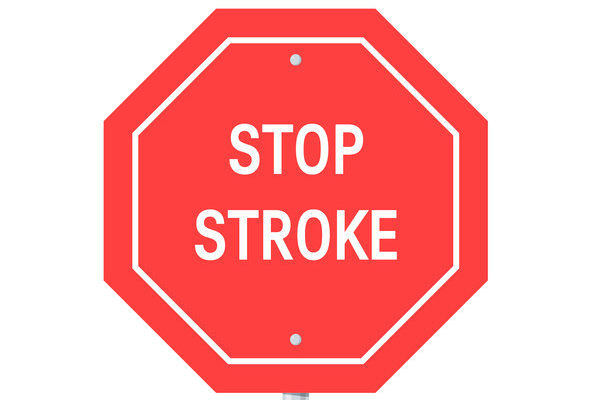7 things you can do to prevent a stroke
- Posted on
- Comment

What can you do to prevent stroke? Age makes us more susceptible to having a stroke, as does having a mother, father, or other close relative who has had a stroke.
You can’t reverse the years or change your family history, but there are many other stroke risk factors that you can control—provided that you’re aware of them. Knowledge is power. If you know that a particular risk factor is sabotaging your health and predisposing you to a higher risk of stroke, you can take steps to alleviate the effects of that risk.
How to prevent stroke
Here are seven ways to start reining in your risks today to avoid stroke, before a stroke has the chance to strike.
1. Lower blood pressure
High blood pressure is a huge factor, doubling or even quadrupling your stroke risk if it is not controlled. High blood pressure is the biggest contributor to the risk of stroke in both men and women. Monitoring blood pressure and, if it is elevated, treating it, is probably the biggest difference people can make to their vascular health.
Your goal: An ideal goal is maintaining a blood pressure of less than 120/80. But there may be good reasons why you and your doctor will not want your readings to be this low. For some, a less aggressive goal (such as no higher than 140/90) may be more appropriate.
How to achieve it:
- Reduce the salt in your diet to no more than 1,500 milligrams a day (about a half teaspoon).
- Avoid high-cholesterol foods, such as burgers, cheese, and ice cream.
- Eat 4 to 5 cups of fruits and vegetables every day, one serving of fish two to three times a week, and several daily servings of whole grains and low-fat dairy.
- Get more exercise — at least 30 minutes of activity a day, and more, if possible.
- Quit smoking, if you smoke.
If needed, take blood pressure medicines.
2. Lose weight
Obesity, as well as the complications linked to it (including high blood pressure and diabetes), raises your odds of having a stroke. If you’re overweight, losing as little as 10 pounds can have a real impact on your stroke risk.
Your goal: While an ideal body mass index (BMI) is 25 or less, that may not be realistic for you. Work with your doctor to create a personal weight loss strategy.
How to achieve it:
- Try to eat no more than 1,500 to 2,000 calories a day (depending on your activity level and your current BMI).
- Increase the amount of exercise you do with activities like walking, golfing, or playing tennis, and by making activity part of every single day.
3. Exercise more
Exercise contributes to losing weight and lowering blood pressure, but it also stands on its own as an independent stroke reducer.
Your goal: Exercise at a moderate intensity at least five days a week.
How to achieve it:
- Take a walk around your neighborhood every morning after breakfast.
- Start a fitness club with friends.
- When you exercise, reach the level at which you’re breathing hard, but you can still talk.
- Take the stairs instead of an elevator when you can.
- If you don’t have 30 consecutive minutes to exercise, break it up into 10- to 15-minute sessions a few times each day.
4. If you drink — do it in moderation
Drinking a little alcohol, such as an average of one per day, is okay. Once you start drinking more than two drinks per day, your risk goes up very sharply.
Your goal: Don’t drink alcohol or do it in moderation.
How to achieve it:
- Have no more than one glass of alcohol a day.
- Consider red wine as your first choice, which some studies suggest might help prevent heart disease and stroke.
- Watch your portion sizes. A standard-sized drink is a 5-ounce glass of wine, 12-ounce beer, or 1.5-ounce glass of hard liquor.
5. Treat atrial fibrillation
Atrial fibrillation is a form of irregular heartbeat that causes clots to form in the heart. Those clots can then travel to the brain, producing a stroke. Atrial fibrillation carries almost a fivefold risk of stroke, and should be taken seriously.
Your goal: If you have atrial fibrillation, get it treated.
How to achieve it:
- If you have symptoms such as heart palpitations or shortness of breath, see your doctor for an exam.
- You may need to take an anticoagulant drug (blood thinner), such as one of the direct-acting anticoagulant drugs to reduce your stroke risk from atrial fibrillation. Your doctors can guide you through this treatment.
6. Treat diabetes
Having high blood sugar damages blood vessels over time, making clots more likely to form inside them.
Your goal: Keep your blood sugar under control.
How to achieve it:
- Monitor your blood sugar as directed by your doctor.
- Use diet, exercise, and medicines to keep your blood sugar within the recommended range.
7. Quit smoking
Smoking accelerates clot formation in a couple of different ways. It thickens your blood, and it increases the amount of plaque buildup in the arteries. Along with a healthy diet and regular exercise, smoking cessation is one of the most powerful lifestyle changes that will help you reduce your stroke risk significantly.
Your goal: Quit smoking.
How to achieve it:
- Ask your doctor for advice on the most appropriate way for you to quit.
- Use quit-smoking aids, such as nicotine pills or patches, counseling, or medicine.
- Don’t give up. Most smokers need several tries to quit. See each attempt as bringing you one step closer to successfully beating the habit.
| Identify a stroke F-A-S-TToo many people ignore the signs of stroke because they question whether their symptoms are real. Don’t wait if you have any unusual symptoms. Listen to your body and trust your instincts. If something is off, get professional help right away.The National Stroke Association has created an easy acronym to help you remember, and act on, the signs of a stroke. Cut out this image and post it on your refrigerator for easy reference. |
Signs of a stroke include:
- weakness on one side of the body
- numbness of the face
- unusual and severe headache
- vision loss
- numbness and tingling
- unsteady walk.
-Harvard










 (Selorm) |
(Selorm) |  (Nana Kwesi)
(Nana Kwesi)